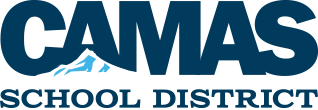Assessment in Camas School District is ongoing throughout all grades and subjects. At its most powerful, assessments enable teachers to understand a student’s level of learning in every subject area in order to provide the “next best instruction.” It also invests students in a deeper understanding of their own learning and progress. Additionally, assessment enables teachers to monitor and then report progress to parents, to strengthen the partnership between home and school. At the heart of assessment is supporting every student’s growth through a knowledge of their strengths and challenges.
Assessment can take many forms, including:
- Observation of student performance
- Teacher–student conferences and other forms of learning conversations
- Review of written work and projects
- Short “screening” assessments that are used to identify students in need of additional support
- Tests at the beginning or end of a unit of learning
- District and state assessment results
Formative, Interim, and Summative Assessment
Assessment in a classroom is a daily process. This kind of assessment is called formative, or assessment for learning. The observations, conversations, and short “dipstick” tasks or questions provide teachers with information that guides instruction in the moment to better meet the needs of learners. Formative assessment also helps teachers provide timely, specific feedback to students, and research shows that this supports more effective learning and retention of understanding.
In addition, teachers often model and then coach students in self-assessment. This builds a student’s understanding of his or her own learning, along with the understanding of what the next step in learning looks like. Students are empowered to take ownership and a more active role in their own learning pathway.
Interim> assessments happen periodically through the year, but with much less frequency than formative assessments. An example of an interim assessment is an end-of-unit test. These assessments are generally administered to a whole group at the same time and focus on a particular set of standards, such as standards specifically addressed in a unit of learning. Interim assessments can be used to both guide instruction and monitor progress toward learning goals.
Summative assessments occur late in the learning cycle, and happen infrequently and at specifically scheduled points each year. These assessments, which include end-of-course tests and state assessments, are also called assessments of learning, and are used to certify learning—to answer the question “What did students learn?” Results help teachers, parents, and students see how far the student progressed toward end-of-year learning targets, or standards. The results also help schools determine growth goals, develop school-wide supports (for example, intervention courses), and inform ongoing professional learning plans.
Want to Learn More?
Formative, Summative, Interim: Putting Assessment in Context: Northwest Evaluation Association blog article explains the differences between and uses of the three types of assessments
Moving Beyond the Bubble: Improved Tests are Finally Here!: National PTA Assessment Fact Sheet
Washington State Assessments:
Camas School District’s State Assessment Information Page for 2016–17
Washington Assessment Resources for Parents (OSPI)
Graduation Tool Kit (OSPI)













